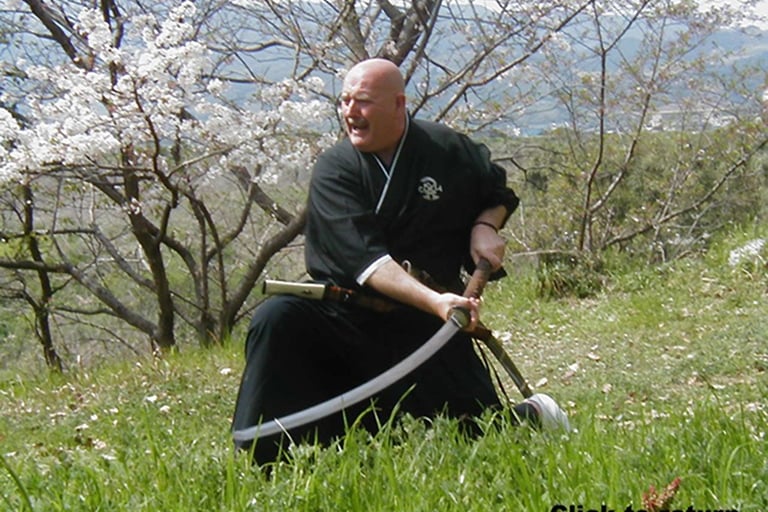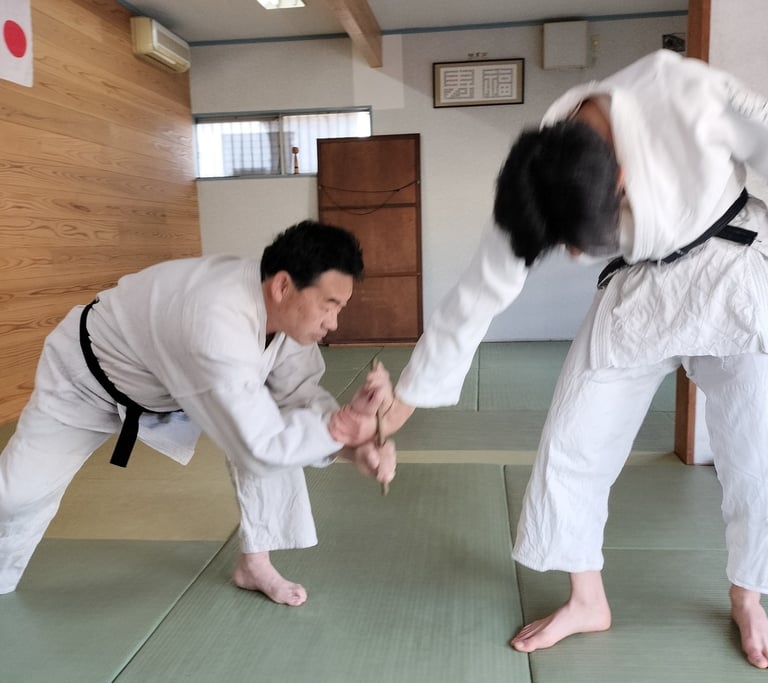Auxilialry Arts
At Calgary Rakushinkan ther eare several other arts that we pracitce on occasion that are less core to our practce and yet we find them extremely valuable.
Asayama Ichiden-ryū (浅山一伝流) is a classical Japanese martial tradition (koryū) founded in the early Edo period by Asayama Ichidensai Shigetatsu. The school specializes in taijutsu — unarmed body methods — including strikes, joint locks, throws, and immobilizations, many designed to control or restrain an opponent swiftly and decisively.
In addition to unarmed combat, the ryū preserved torite (arresting methods) and responses against armed attackers, reflecting its role in civilian defence and policing rather than battlefield combat.
Scholars have also noted its possible influence on Daitō-ryū Aiki-jūjutsu, due to both the geographical overlap in Aizu and the clear technical similarities in locking, controlling, and restraining methods.
What becomes immediately apparent in practice is the emphasis on the use of the lower abdomen and the principle of instantaneous movement upon contact, giving the art its distinctive character.
Read more about our taijutsu arts - Aikido and Daito Ryu
Kage-ryū Battojutsu




Asayama Ichiden Ryu Taijutsu - Ōkura-den
Kage-ryū (影流) is a classical sword school founded around 1550 by Yamamoto Hisaya Masakatsu, a retainer of the Tachibana clan in Kyushu. It was an otome-ryū—a tradition kept within the clan—and preserved largely unchanged while many other long-sword styles disappeared or evolved.
Weapons and Practice
The ryū is known for battojutsu with exceptionally long blades, often 2 shaku 8 sun (≈85 cm) to 4 shaku (≈120 cm), some weighing over 3 kg. Training covers long-range cuts, thrusts, close-quarters responses, use of the short maezashi, and methods suited to armoured and mounted combat as well as indoor defence.
Purpose and Benefits
Practice builds balance, timing, and control with heavy weapons, cultivating strength, precision, and composure. It also offers direct engagement with Japan’s warrior heritage—preserving strategies, footwork, and tactics developed for real combat—while fostering discipline, focus, and respect for tradition. Drawing such a large blade requires skill and builds flexibility and power in the waist and legs.
Tradition Today
Still linked symbolically to the Tachibana family, Kage-ryū persists in small groups in Japan, Canada, and the U.S., transmitting a rare long-sword lineage of sixteenth-century battojutsu without modern rank structures. Our practice is guided by the sole inheritor of the art Shihan Colin Watkin.
*Kage-ryū is not to be confused with the Kage Ryu (陰流) of Aizu or it's descendent arts. There is no relation.
**Battojutsu is synonymous with iaijutsu. It means sword unsheathing art.
Read more about our sword arts - iaijutsu and kenjutsu
Calgary Rakushinkan
カルガリー楽心館
Experience traditional Japanese martial arts training.
© 2025. All rights reserved.
CONTACT
rakushincalgary@gmail.com
(403) 401-8257
